The BlackBerry PlayBook Review
by Anand Lal Shimpi on April 13, 2011 9:00 PM EST- Posted in
- Tablets
- Smartphones
- RIM
- BlackBerry
- PlayBook
- Mobile
The PlayBook Browser
Two years ago RIM acquired Torch Mobile, a development house that happened to be a significant contributor to the WebKit project. WebKit also happens to be the foundation for both Google Chrome and Safari (both Mac and iOS versions). Torch Mobile had its own WebKit based browser called Iris, which eventually got folded into BlackBerry OS 6.0 and launched with the BlackBerry Torch.
The PlayBook expands upon Torch Mobile's work with one of the strongest parts of the BlackBerry tablet experience. The PlayBook's browser technically supports tabs however the tab bar isn't always visible as it is with Honeycomb. The PlayBook handles browsing multiple web pages better than the iPad, but not nearly as well as the Xoom.
Scrolling is incredibly smooth, even on Flash enabled web pages. Scroll down too quickly and you'll get an empty screen that takes a moment to catch up with your scrolling. It's not uncommon to see this on iOS, it happens less with the iPad 2 and it seems to happen more with the PlayBook.
Web page compatibility is ridiculously good with the PlayBook's browser, partially due to RIM's excellent implementation of hardware accelerated Flash 10.2. Corner cases that wouldn't work on Android or iOS work perfectly on the PlayBook. While I personally prefer the UI of Honeycomb's browser and the size/screen of the iPad 2, the PlayBook probably offers the best browsing experience from a pure software standpoint of any of the tablets.
RIM's tablet browser passes the Acid3 test and scores higher on the HTML5test than both the iPad 2 and Honeycomb. The PlayBook user agent comes up as: Mozilla 5.0 (PlayBook; U; RIM Tablet OS 1.0.0; en-US) AppleWebKit/534.8 (KHTML, like Gecko) Version/0.0.1 Safari/534.8+.
Nearly all websites treat the PlayBook as a desktop browser and don't force you to a mobile version of the site. This is true for video sites as well, like Hulu and YouTube.
Having full Flash functionality built in to the browser is nice. You can disable Flash entirely if you want to, but leaving it enabled doesn't really impact performance all that much - even scrolling with Flash ads in place remains pretty smooth.
Sites that depend entirely on Flash work on the PlayBook, although controlling pure Flash sites can be a problem. Case in point: Pandora. The web version of Pandora is fully functional on the PlayBook, albeit slow to load. The trouble comes in when you try to use Pandora's integrated scroll bar or actually switch stations. Pandora is optimized for a mouse driven experience, not a touch UI, resulting in a lot of frustrating tapping and really slow scrolling. It's workable, but definitely not desirable.
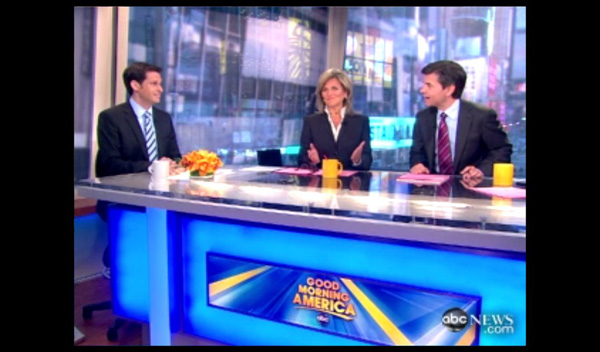
This is full screen Flash on the PlayBook
Flash video players also work on the the PlayBook within its browser. I was reading an article on abcnews.com the other day with an embedded video. I just tapped the video and it started playing immediately. The same for embedded Hulu videos in Facebook. The YouTube website also works, although RIM ships the PlayBook with a dedicated YouTube client for better browsing.
The problem with embedded Flash video is the same as the Pandora issue: control. You can't really hover to expose controls with a touchscreen so what you end up doing is a lot of quick tapping to try and bring up controls, change the setting you want and get back to playing the video. It's frustrating and doesn't work all of the time. None of this is RIM's fault, but now that tablets are at the point where they can start to behave like notebook/desktops web developers will have to rethink the way they build websites. The web is still the unifying platform between all OSes, it's just a few steps behind in becoming touch optimized.


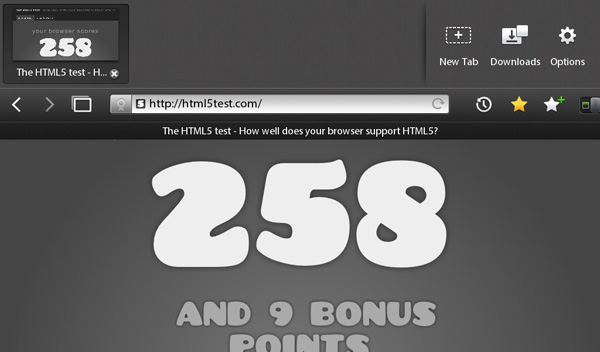
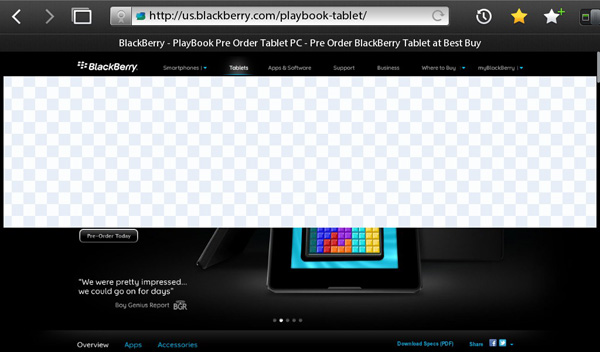
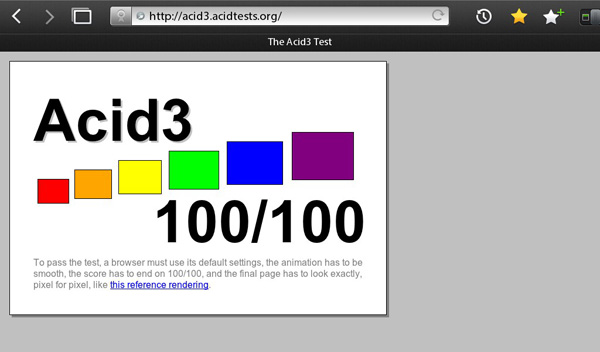
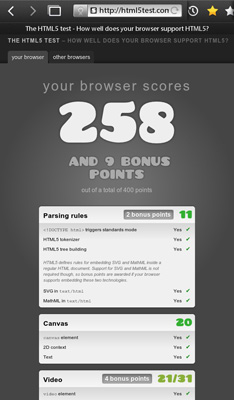
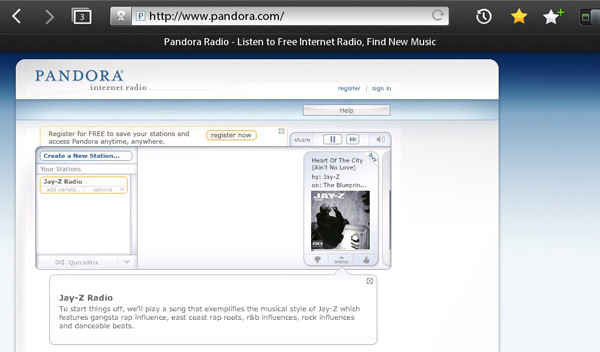








77 Comments
View All Comments
Anand Lal Shimpi - Thursday, April 14, 2011 - link
You're very right, clarified! :)Take care,
Anand
Targon - Thursday, April 14, 2011 - link
I will note that the idea of using gestures that originate in the bezel seems to be an evolution of the Palm(now owned by HP) gesture area on the Palm Pre and the other WebOS based smartphones. Yes, the tablet lets you use any bezel, but as I said, this is an evolution of the concept that Palm implemented with the gesture area.Since the HP Touchpad will not have a dedicated gesture area, it will be interesting to see how things play out going forward in the tablet space.
melgross - Thursday, April 14, 2011 - link
But do the gestures really extend into the bezel area, or do they really just start at the first pixel your finger encounters when swiping from beyond the edge of the screen? I think it's the latter. Swiping from the bezel just insures that your finger will be detected hitting that first pixel in the screen at the edge, which tells the OS that it's a special "bezel" gesture.Maybe I'm wrong, but it makes sense to me that that's how it works, then thinking that the entire bezel is gesture enabled with sensors, though it's possible.
Perhaps Anand, can help here.
AnitaPeterson - Thursday, April 14, 2011 - link
Mate, you wrote so many pages, but eschewed some of the most important questions.1) You discuss the screen, but make no mention of the technology - is it IPS? is it TN? As for the surface - is it polycarbonate? is it GorillaGlass?
2) You discuss the USB, but make no mention of crucial use - does the Playbook have USB host capabilities? In other words, can you connect an external HDD to it (whether self-powered or externally powered) and read files from it?
3) Since we mention USB and external storage, how about a peep about SD card support? Seriously... a review with nary a mention of additional/expandable storage?
4) Why are you comparing it with the iPad and the Xoom, instead of comparing it with the only other real, usable device in its size class, namely the Galaxy Tab??? The Playbook is not for people who want large devices, who can get an iPad... Is it not clear that the size is one of the biggest factors at play here? You mention the Galaxy Tab exactly once, and make an intriguing statement that the Playbook is a bit larger... but when it comes to pictures, again you compare it with the Kindle (!??) and the iPad. Eh? the Kindle???
I'm sorry to be harsh, but this is a rush job... just like the Playbook itself.
Lepton87 - Thursday, April 14, 2011 - link
Have you even read the review? It answers two of your three questions. The tablet doesn't have an SD card slot and it doesn't have an USB port either. Your fist question still stands, I'm also curious what panel technology its screen uses.Pessimism - Thursday, April 14, 2011 - link
Incorrect. It does have a USB port, and the review specifically states this when discussing available charging options. The poster was asking whether its possible to use a male-male USB cable to connect mass storage to it.Pessimism - Thursday, April 14, 2011 - link
of hearing everyone whine and complain about lack of matroska support. matroska has NO STANDING outside anime nuts who can't wrap their brains around a second file to contain subtitles. matroska is a tiny speck with no corporate backing, no manufacturer is going to dedicate development time or die space to support it.Penti - Friday, April 15, 2011 - link
Actually it has pretty good manufacturer standing now, it's supported by Sonic Solutions/divx, ArcSoft, CoreCodec and all the serious chipset manufacturers of media player chipsets and STB solutions. As well as support on BD-players and televisions coming along. Nero also has support for it btw. Even boxes like the Roku now supports local playback and MKV. (Roku XDS with USB) Also there is no die space needed it's just a container. Software is all that's needed. Nokia also added MKV support in Symbian^3.DesktopMan - Thursday, April 14, 2011 - link
"As you'll see in our video tests, the PlayBook is the first ARM based tablet we've used that can decode a 1080p H.264 High Profile video stream."I believe the Hard Kernel ODROID-A was the first on the market (though in limited availability), as it's using the Samsung Exynos 4210 SOC. Would be great to see a test of that, to see how well the Exynos drives a tablet. I have high hopes for it.
NCM - Thursday, April 14, 2011 - link
The ability to handle 1080p H.264 is technically impressive, but I have to wonder about its relevance to the intended business market. One might like that at home, although even there it seems to me to be a party trick.And speaking of business use, the idea of using webmail for that is of course a joke, especially on a mobile device that won't always have a live net connection. I'm sure we all understand that this really is a software timing problem, but still, a bit of an embarrassment for RIM.
I'm not enticed by the 7" screen size, which is too big for the pocket and seems too small for good reading functionality. But one of the things we're seeing from the iPad's success is that people are coming up with their own uses for tablets, uses that weren't necessarily envisioned before they hit the market. Maybe that'll happen with the 7" devices too?